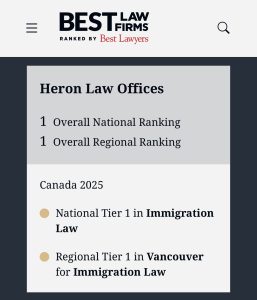
For those of you who do not know, I have offered coaching services over the past few years. While it is still secondary to my main practice of representing clients, it is an area I hope to do more in as I feel there is value-add to helping other professionals and organizations increase their immigration competency.
I have been very grateful to have some excellent clients, including an RCIC who referred me a matter that they wanted my help on. I want to preface that this RCIC is excellent. I help RCICs of all levels but this particular one is among the best in their field and very successful at what they do.
Fact Pattern: Procedural Fairness Letter
A client had received a procedural fairness letter (“PFL”) after having proactively updated IRCC about a change in employment that occurred after an application for permanent residence (“APR”) had been submitted to IRCC on a Canadian Experience Class (“CEC”) Express Entry application. The Applicant had claimed the 50 Offer of Employment points.
Like others, the RCIC read my blog on the topic and mentioned they had updated the Officer initially of the fact that the 50 points shouldn’t have been lost. However, the Officer appeared to have ignored/possibly misinterpreted the language around timing and alleged the 50 points should not have been awarded, which would have brought the score below the threshold draw score.
Strengthing the Submission
I asked the RCIC to send me their submissions that they were drafting for feedback and when I looked at it, my opinion was it was technically correct but did not engage the Officer enough in walking through the logic (and importantly quoting/citing/directly highlighting the relevant law and policy provisions) in turning over the Officer’s mind. After listing a few areas of improvement, the RCIC sent another version which I felt was very strong, and greenlighted it.
Successful Outcome
The RCIC told me this week that the Applicant had been invited to land as a PR, meaning the Officer accepted the explanation and reached the correct conclusion on the matter. For a fraction of the cost and administrative hassle of having the client switch representation, I was able to coach the RCIC into strengthening their submissions.
Communicating Through Law and Policy
While acknowledging that there are both several grey areas and as well many mistakes that seem obvious on the face of decisions, one of my main findings from Coach Will work is that a lot of the challenges RCICs have (and by the way, this RCIC did not have this problem – for them it was more a refining than re-writing) is in communicating through law and policy how the Officer should assess the client’s case. Too often I read either very pro forma language or copied case law/website excerpts that don’t contain enough actual analysis OR merely summaries and appeals to emotion or a ‘business case‘ for a client rather than a ‘legal case.’ On the flipside overdoing legal submissions is a problem many lawyers have also, where they over-complicate/pre-litigate a matter in a way that detracts from the facts.
Whether to emphasize fact, law, or both in a submission is an art form developed over years. I recommend all those doing submissions to stay patient with them.
Final Tip: Think of the Submission Letter as Packaging
Another final Coach Will tip I would pass on is to think about a submission letter no longer as the heart of the application but as the packaging or the letter that accompanies the gift. It is the content of the substance itself (and increasing the objective weight of that material, but also the subject strength of key explanation letters/affidavits) that needs to shine through. The submission letter is great for framing and filling in the gaps, your attempt as a professional to communicate and issue flags with Officers, if and only if, you need to.
For more Coach Will advice or to consult me about your problem cases, please book a Coach Will meeting today.




